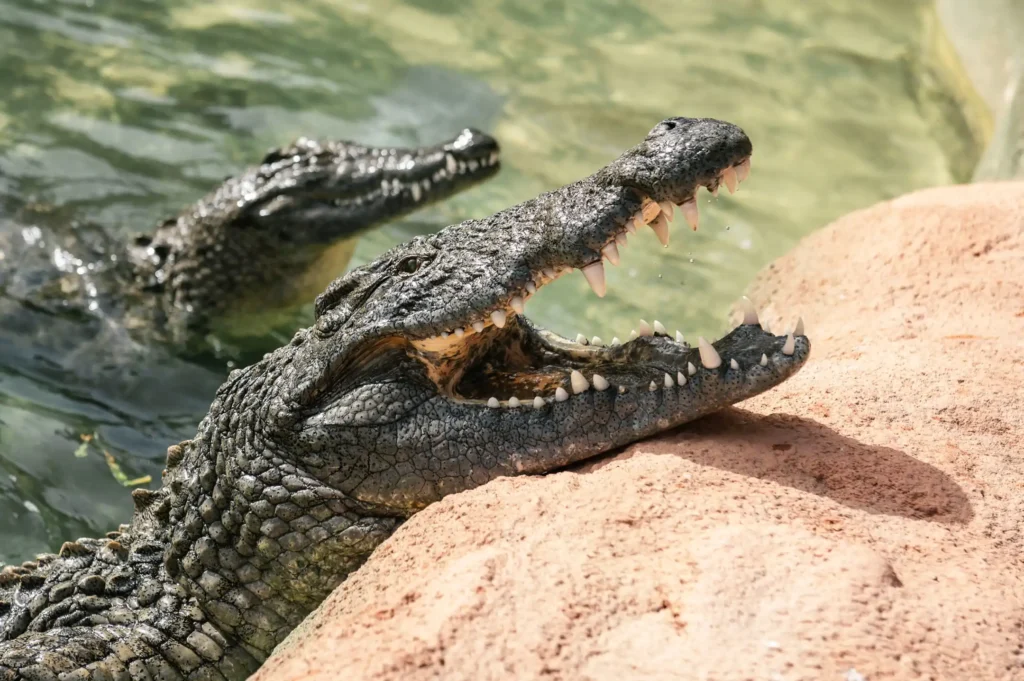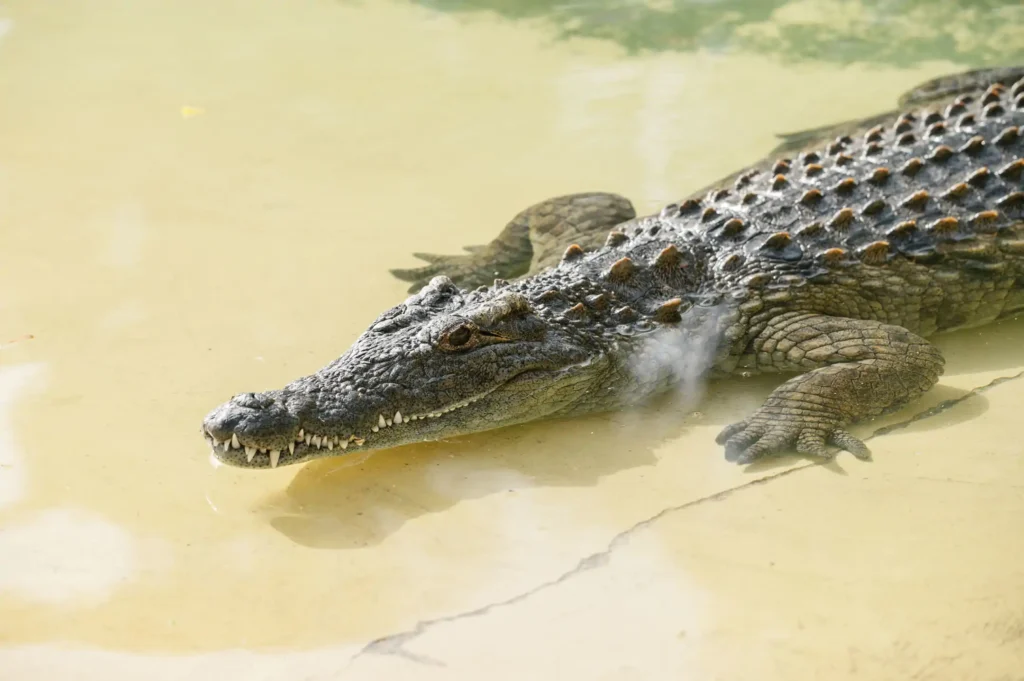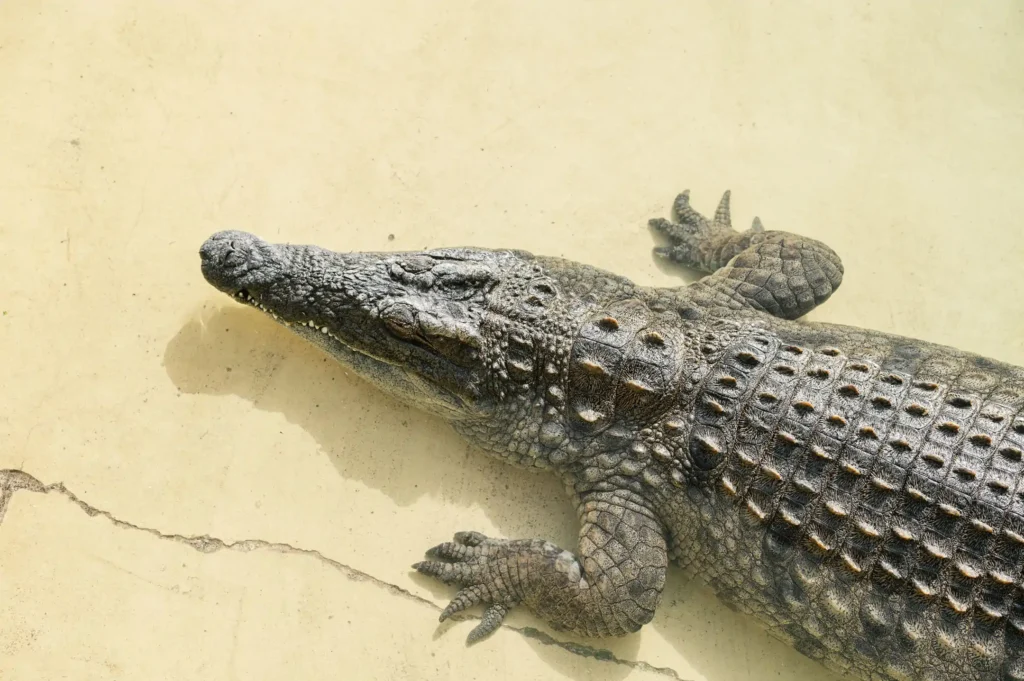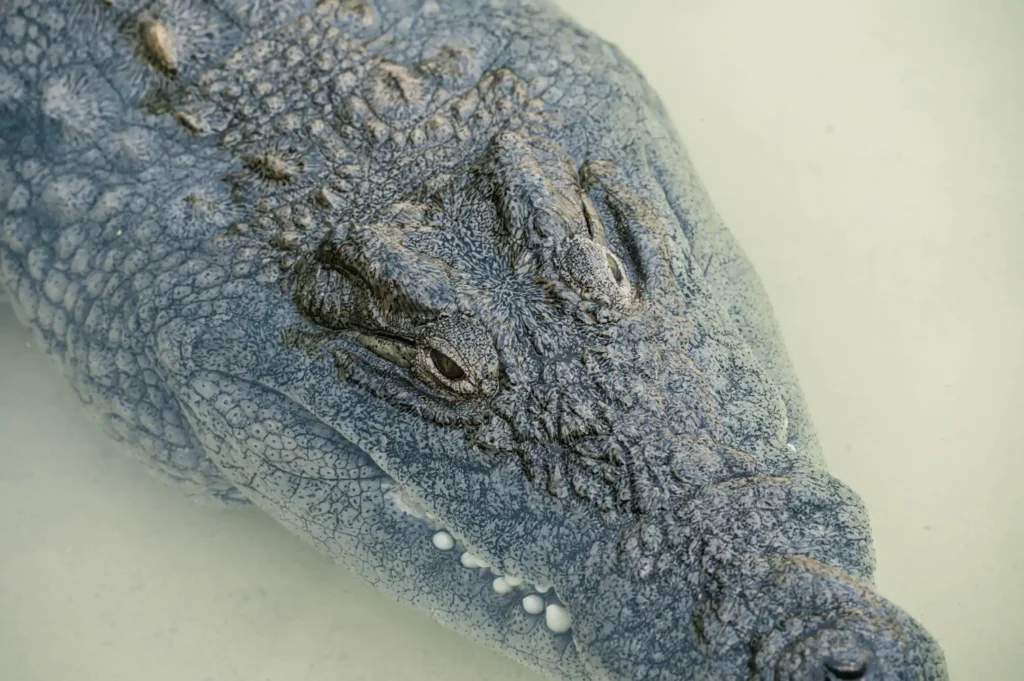Considered the largest freshwater crocodiles in the world and second only to the saltwater crocodile.
Physical features
Large reptiles, up to 5-6 metres long, with a flat head and a very long snout with white conical teeth. Its body is elongated and its tail is much longer than its trunk, on which it has a double crest of scales.
A kind of armour protects their thick skin formed by bony plates called osteoderms. They have 30 to 40 teeth in each jaw, which fit into sockets in the jaws, interlocking with each other when they close their mouths. In alligators, these teeth are not visible. The jaws of crocodiles are very strong when they close, so strong that they can crush the bones of small animals, but when they open their mouths, their jaw muscles are very weak, so they can be prevented from opening by holding them closed with the hand.
Habitat
Its geographical distribution, contrary to what its name indicates, is not only located around the Nile River, but throughout a wide extension of Africa, from the sub-Saharan region to South Africa, including the island of Madagascar.
It inhabits a wide variety of ecosystems such as lakes, marshes, rivers, coastal areas and swamps.
Diet
They are carnivorous animals that attack by surprise, stalking their prey from the water, biting them and dragging them underwater to drown them. They don’t have the capability to chew or break off small pieces of food, proceeding to tear and swallow prey whole or in very large chunks.
Reproduction
Crocodiles are oviparous reptiles and reach reproductive maturity at about 10 years of age. They bury their 20 to 90 eggs, about the size of a goose egg, in sand, mud or plant debris, where they leave them to be incubated by the heat of the sun and the natural decay of vegetation.
Females of some species remain in the vicinity of the nest to protect it and care for the hatchlings, although many of the eggs are lost to predators.
Behaviour
Crocodiles are the noisiest reptiles in existence and they emit sounds ranging from hissing to terrifying roars and bellows, almost always during the mating season.
They are social animals with a well-defined hierarchy and their behaviour is conditioned by it, in which the lower-ranking animals, in collective hunting strategies, attack first, followed by the larger ones, dragging their prey until it is drowned. In this way, they hunt down larger prey.
On land, these animals move quickly by means of a crawling movement, but they can also walk on all fours, like mammals.
Threats
These reptiles have no predators in the wild and their threats are rivalry attacks by conspecifics and mainly humans, who hunt them for the high value of their skins and other body parts.
Status and conservation
Species assessed in the IUCN Red List as Least Concern and in the CITES Convention included in Annex I





